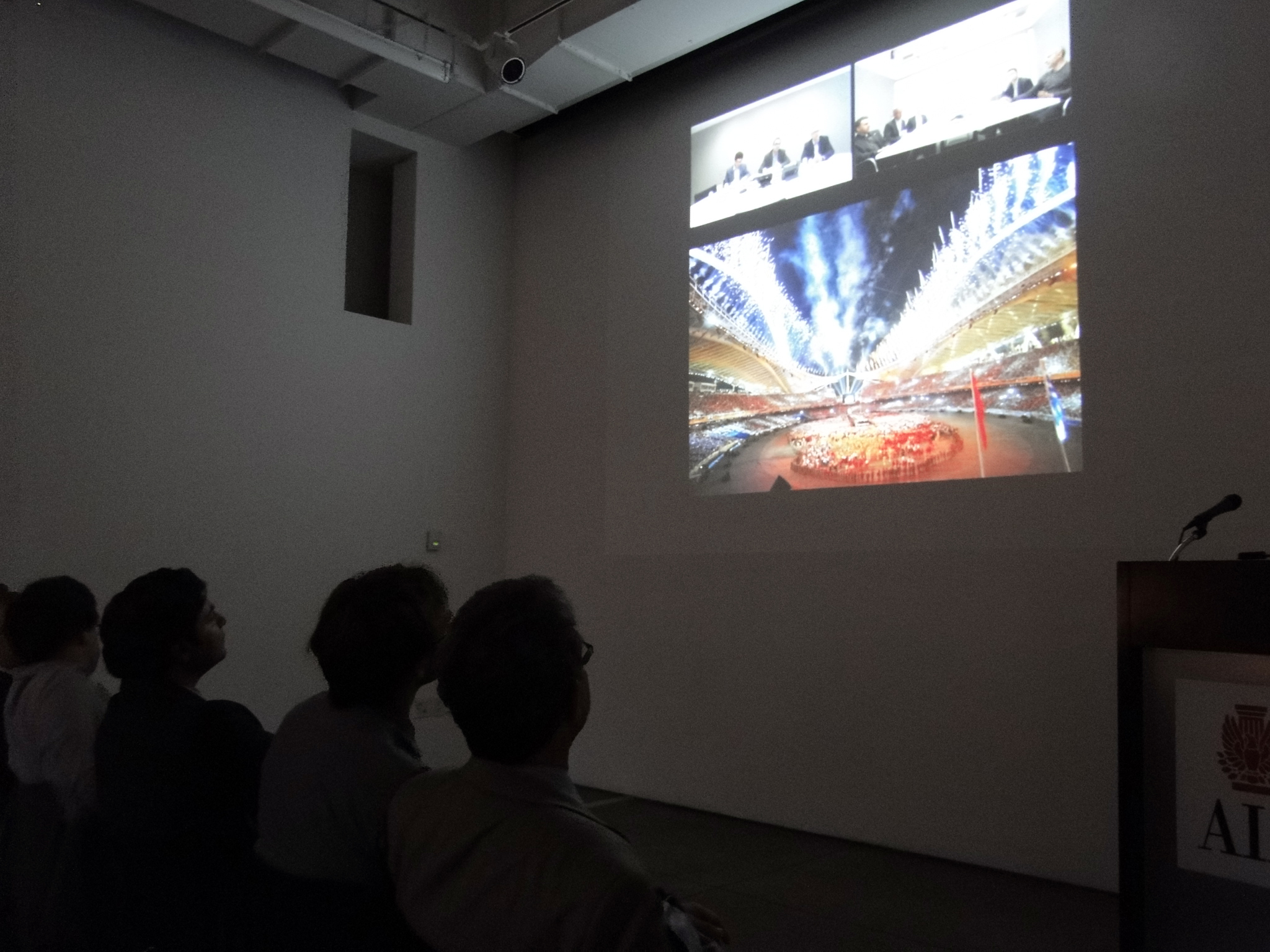by: Murrye Bernard Assoc. AIA LEED AP

The event featured video produced by John Mcintyre, ANZIA, that interspersed recorded interviews with images of past Olympics architecture.
Daniel Fox
Event: London 2012 Olympics @ The Center: Lecture and Opening Ceremonies Party
Location: Center for Architecture, 07.27.12
Moderator: Rick Bell, FAIA, AIANY Executive Director
Speakers: Alkis Klimathianos, Kohn Pedersen Fox (Athens Olympics); João Pedro Beckheuse (via Skype), Winner of the Olympic Port Competition (Rio 2016 Olympics); and pre-recorded interviews with Kevin Owens, London Organizing Committee; Jeff Keas, Populous; Dan Epstein, Sustainability Leader/London 2012 Olympics; Michael Taylor, Michael Hopkins & Partners; and Jerome Frost, ARUP (London Olympics)
Organizer: AIANY Global Dialogues Committee
Reception by: Food by The ChipShop; beer by Fuller’s and Whychwood; wine by Monsieur Touton
Sponsor: Microsol Resources with technical support by Autodesk
Millions tuned in to watch Olympic athletes compete, but London itself was the real star of the show. Hosting the Olympic Games creates an opportunity for a city to introduce itself to the world, but it also permanently alters the fabric of the city. Future host cities should take note of both the victories and mistakes made in planning for parks of the present and past. “Cities learn from each other, and these changes can be jump-started by the infusion of ideas from another place,” remarked Rick Bell, FAIA, who moderated a panel discussion of designers involved with parks in Athens (past), London (present), and Rio (future).
The first of the modern Olympics was held in Athens in 1896, and then returned to the city in 2004. According to Alkis Klimathianos of Kohn Pedersen Fox, who worked on the Athens Olympics, the planners faced the challenge of offsetting pollution and congestion, while grappling with post-9/11 security issues. In the wake of the Olympics, many of the venues fell into disrepair and have become unofficial homeless shelters due to the overwhelming cost of up-keep (over $3 billion annually). There were some positive changes: infrastructure now connects the region, and many notable architects have since contributed to the architectural legacy of Athens.
The planners and designers for London’s Olympic Park – including members of Populous, Michael Hopkins & Partners, and ARUP – discussed their experiences in a pre-recorded video conference call, which was interlaced with full-sized images of buildings and sites being discussed. They agreed that London is a city many people are already familiar with, so they didn’t attempt to make a grand cultural statement through the park’s design. Instead, they focused on transforming the previously neglected East End into a thriving place to live and work long after the Games are over. Thanks to transportation improvements, what was once a 40-minute trip from the center of London is now only a seven-minute ride by rail.
The next city to play host is Rio de Janeiro in 2016, and the planning process is well underway. João Pedro Beckheuse, winner of the Olympic Port Competition, joined the panel via Skype to discuss the growth the Games will bring to the harbor, including 4,000 housing units and a new five-star hotel. “This level of investment and growth would take 20 to 30 years without the Olympics,” he noted. Still, Rio has a few hurdles to clear before the torch can be lit: Adam Williams of AECOM, the firm behind the master plan for Rio’s park, was not able to join via Skype because his computer was stolen.
Murrye Bernard is a freelance architecture writer and a contributing editor to Contract magazine and e-Oculus. www.murrye.com









